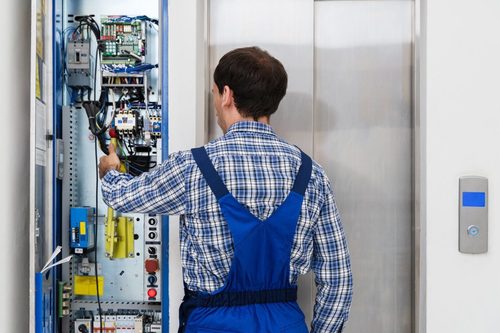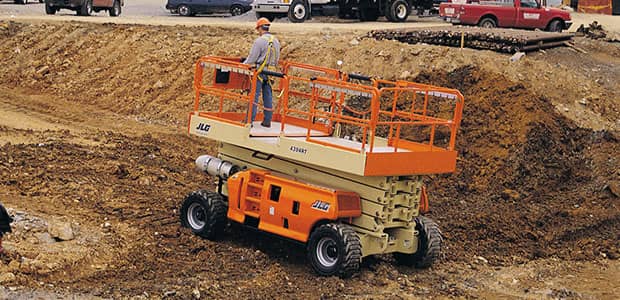Advanced Lift Engineer Course: Get Ready For Careers with Leading Lift Repair Companies Near Me
Advanced Lift Engineer Course: Get Ready For Careers with Leading Lift Repair Companies Near Me
Blog Article
Comprehensive Overview to Elevator Systems and Their Upkeep
Navigating the elaborate globe of elevator systems and their upkeep is a task that requires precision and expertise. From the various kinds of lift systems in use to the meticulous adherence to safety policies, the upkeep of these upright transport gadgets is a diverse venture.
Kinds of Elevator Systems
The most usual kinds consist of hydraulic lifts, traction lifts, machine-room-less lifts, and vacuum elevators. Hydraulic lifts are ideal for low-rise structures and use a hydraulic piston to relocate the lift automobile. Machine-room-less lifts are a space-saving option as they do not call for a separate equipment area for the elevator equipment.
Each kind of lift system has its very own benefits and downsides, making it critical for structure owners and developers to carefully consider their details demands before picking the most appropriate choice. Elements such as building height, room accessibility, power effectiveness, and budget plan constraints all play a significant role in figuring out the most effective lift system for a specific structure.
Typical Upkeep Problems
Routine upkeep of elevator systems is essential to ensure smooth operation and lengthen their lifespan. Regardless of normal upkeep, elevator systems can still run into common upkeep concerns that need to be quickly resolved to prevent disruptions in service. Normal inspections and positive upkeep can aid determine and settle these common upkeep problems prior to they intensify and influence the general efficiency of the lift system.
Safety Regulations and Conformity
Abiding by rigid safety and security laws and ensuring compliance with market requirements are extremely important for keeping the operational stability of lift systems. Elevators go through a thorough set of safety policies to safeguard travelers, maintenance employees, and the basic public. Regulative bodies such as the Occupational Security and Health And Wellness Administration (OSHA) in the United States and the European Lift Association (ELA) in Europe establish guidelines that cover numerous facets of lift style, installment, upkeep, and procedure.
Conformity with these guidelines is not just a lawful need however also a moral obligation for building proprietors and lift maintenance companies. Routine evaluations, upkeep checks, and adherence to safety methods outlined in the regulations are important to ensure the efficient and risk-free operation sites of elevator systems.
Ideal Practices for Maintenance

One more important best practice is to quickly resolve any type of reported concerns or uncommon noises to avoid additional damages. Carrying out an aggressive method to upkeep can save money and time in the lengthy run by staying clear of costly repair services or replacements. Structure owners need to likewise consider purchasing innovation upgrades to improve the effectiveness and security of their lift systems. By following these ideal practices, elevator systems can operate smoothly and safely, offering reliable upright transportation for passengers.

Advanced Technologies for Efficiency
Executing sophisticated modern technologies in lift systems can dramatically improve functional efficiency and guest experience. These systems enable travelers to input their desired flooring before entering the lift, which then guides them to the most reliable automobile.
Additionally, the combination of wise sensors and predictive upkeep abilities has actually changed lift maintenance. These sensors can detect possible concerns before they escalate, enabling aggressive upkeep interventions and lessening downtime. Furthermore, using energy-efficient elements and regenerative drives helps decrease power intake and operating prices in elevator systems.
Furthermore, the implementation of cloud-based monitoring and remote diagnostics enables for real-time tracking of lift performance and prompt troubleshooting of any type of malfunctions. visit here This proactive technique not only enhances system reliability but also boosts the overall customer experience by making certain smooth and undisturbed elevator operations.
Conclusion
To conclude, understanding the different kinds of elevator systems, typical maintenance issues, safety regulations, finest maintenance techniques, and advanced modern technologies for effectiveness is important for guaranteeing the smooth operation of elevators. By sticking to safety and security regulations and applying finest practices for maintenance, building owners can extend the life-span of their lift look at these guys systems and ensure the safety and security of travelers. It is necessary to remain upgraded on the newest advancements in lift innovation to boost performance and integrity.
The most typical types consist of hydraulic lifts, traction elevators, machine-room-less elevators, and vacuum lifts. Hydraulic elevators are suitable for low-rise buildings and utilize a hydraulic piston to move the elevator car. Machine-room-less elevators are a space-saving option as they do not require a different device room for the elevator equipment. Routine examinations and aggressive maintenance can aid recognize and resolve these typical maintenance problems before they escalate and influence the total performance of the lift system.

Report this page